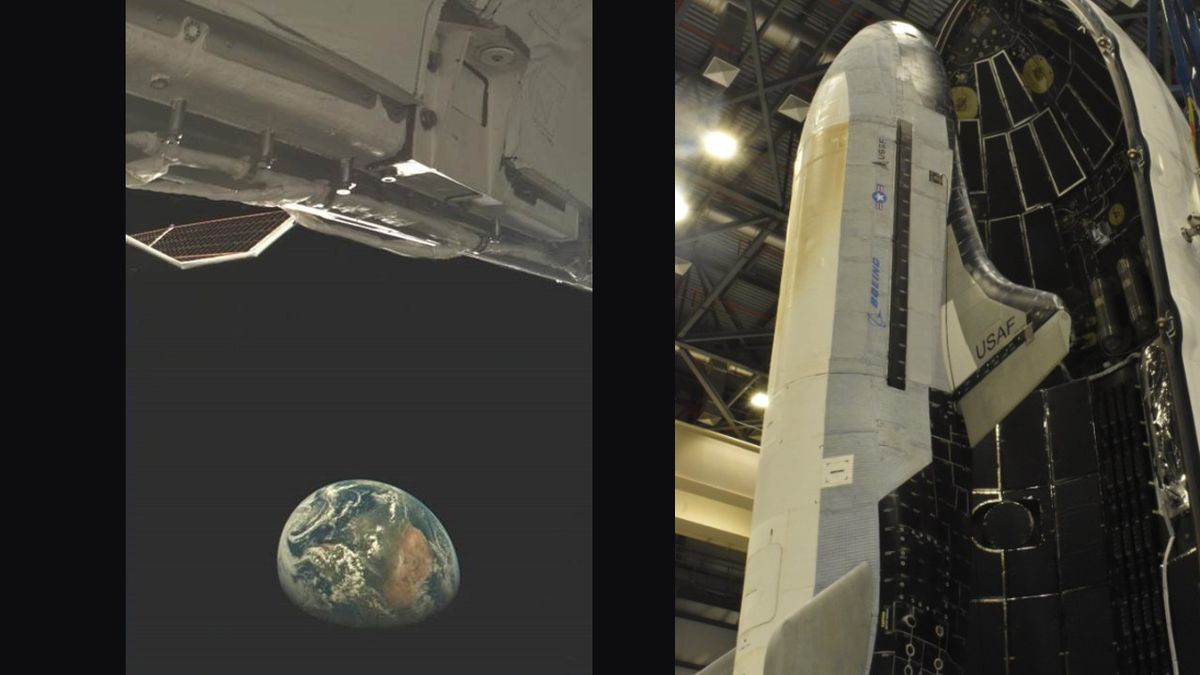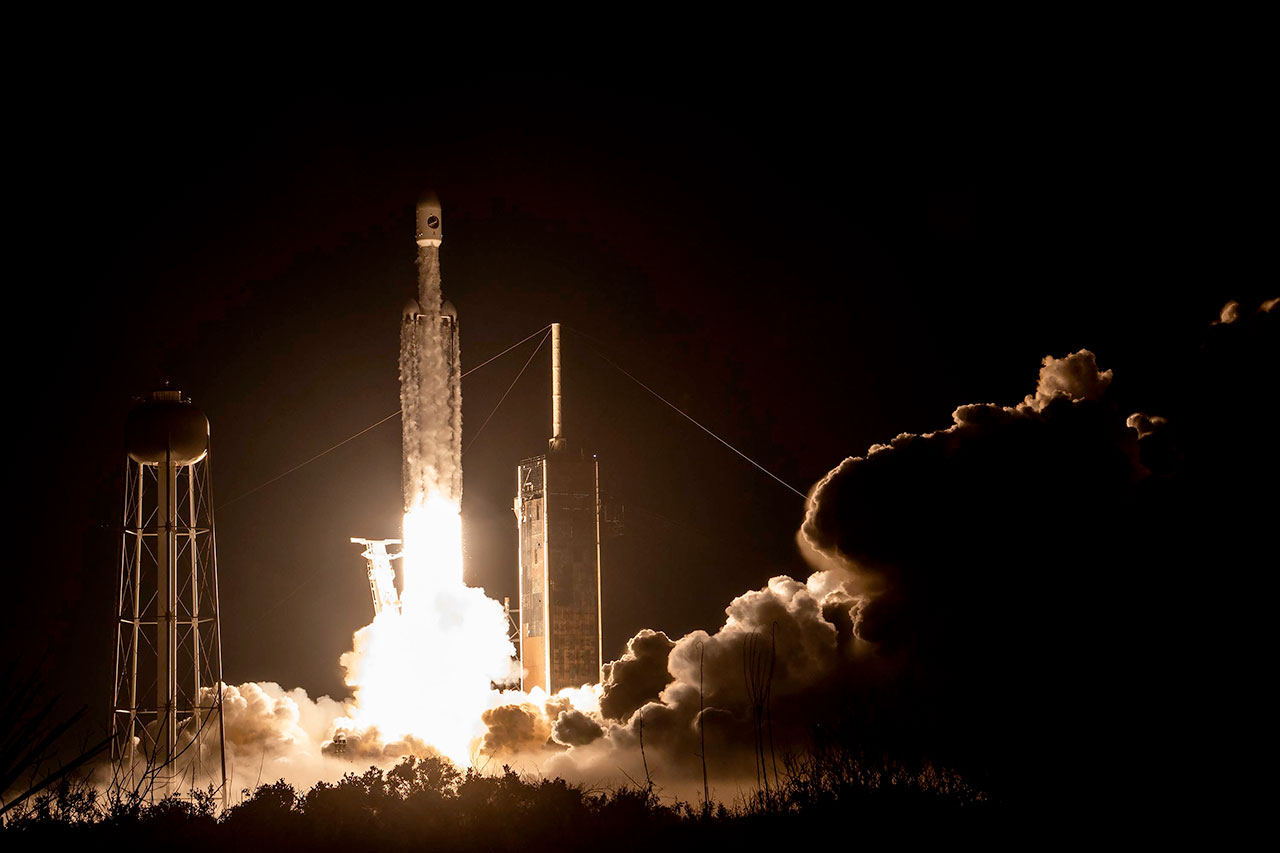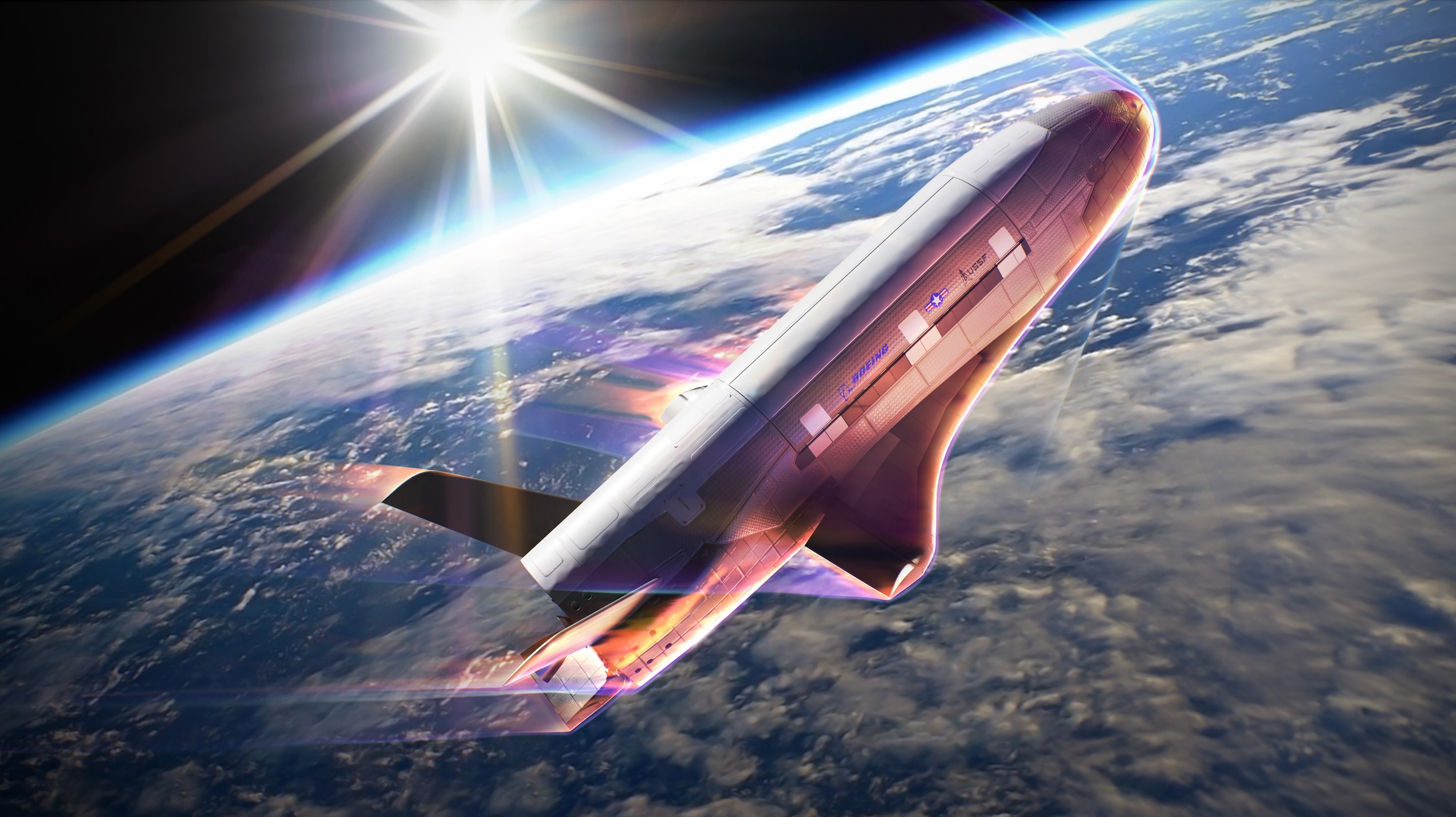
The United States Space Force recently provided a rare look at its enigmatic X-37B spaceplane currently orbiting Earth.
This captivating image, shared on February 20, was captured by a camera mounted on the X-37B as it soared above the African landmass. The photo showcases one of the craft’s solar panels on the left and its open payload bay at the top. Since its launch on December 28, 2023, aboard a SpaceX Falcon Heavy rocket, the vehicle has been in orbit for over a year, executing its seventh mission successfully.
This photo marks a significant milestone as it is the first publicly released image of the X-37B in orbit. While it reveals little about the vehicle’s current undertakings, it offers a stunning view of Earth as a backdrop, highlighting the altitude at which this mission operates.
This is the second time we’ve had the opportunity to glimpse the X-37B in orbit. A fleeting shot was seen during the livestream of its latest launch, showing the spacecraft deploying from the upper stage of the Falcon Heavy while still attached to its service module:
Sneaky ! but I got it 😇During the SpaceX USSF-52 launch broadcast they showed a 2 second clip of X-37B OTV-6 with the service module during deployment on-orbit !(the big structure sticking out is FalconSat-8 btw)#X37B #OTV6 pic.twitter.com/zMf19vFvp0December 29, 2023
Prior to its current mission, the U.S. Space Force indicated that this flight would include operating the reusable spaceplane in new orbital environments, testing innovative technologies for space domain awareness, and evaluating the effects of radiation on materials supplied by NASA, as outlined in a Space Force press release.
While previous X-37B missions operated in low Earth orbit, the latest image indicates that the spaceplane is functioning at much higher altitudes. SpaceX’s Falcon Heavy rocket is capable of launching payloads into geosynchronous orbit, which is situated over 22,000 miles (35,000 kilometers) above Earth.

The X-37B has been in the spotlight lately, particularly after the Space Force and Boeing disclosed plans to execute a new “aerobraking maneuver“, which utilizes atmospheric drag to efficiently alter its orbit.
The recent statement from the U.S. Space Force accompanying the image confirmed the X-37B was conducting experiments last year. It remains unclear if these experiments pertain to the aerobraking techniques mentioned, but the statement alludes to them.
“An onboard camera of the X-37B, utilized to monitor the vehicle’s health and safety, took an image of Earth while executing experiments within a highly elliptical orbit in 2024,” the Space Force noted. “As part of its seventh mission, the craft performed a series of groundbreaking maneuvers known as aerobraking, aiming to securely modify its orbit using minimal fuel resources.”

Despite the U.S. Space Force and its predecessor, the U.S. Air Force, maintaining a veil of secrecy surrounding the activities of this spaceplane during its missions, it is understood that the X-37B operates as a platform for testing new space technologies.
To date, it has tested numerous payloads, including a project aimed at solar power transmission from space, as well as thermal protection systems and autonomous flight capabilities. According to the Space Force, the X-37B is recognized as a leader in testing, experimentation, and the development of operations for reusable spacecraft technologies.
The X-37B previously achieved a record-long flight of 908 days during its sixth mission, which concluded upon landing at NASA’s Kennedy Space Center on November 12, 2022.
Details about the mission timeline are typically kept under wraps by the Space Force, leaving the return date of the spaceplane from its current mission uncertain.
Notably, China is also in the process of testing its own reusable spaceplane, which carried out its third mission just two weeks before the latest X-37B launch.









